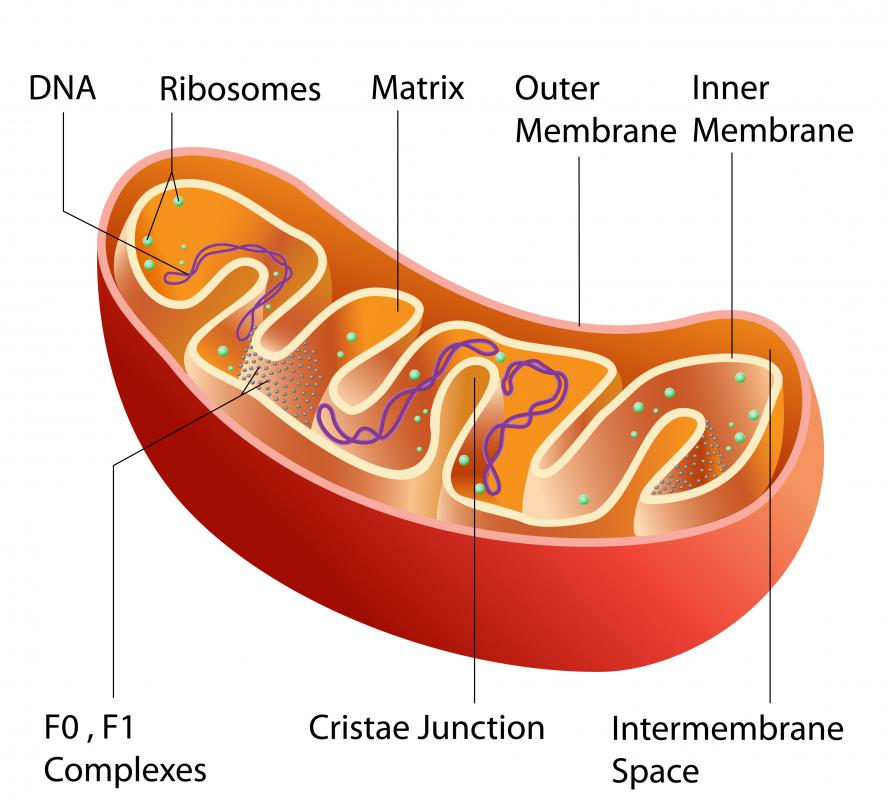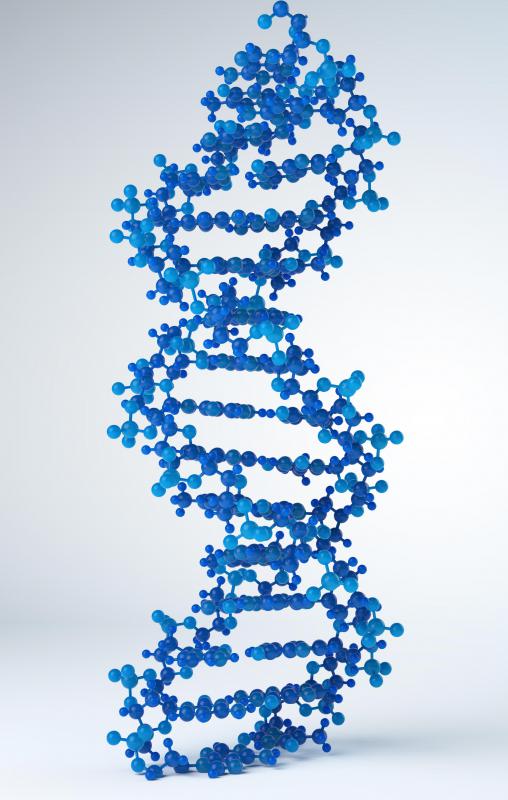At WiseGEEK, we're committed to delivering accurate, trustworthy information. Our expert-authored content is rigorously fact-checked and sourced from credible authorities. Discover how we uphold the highest standards in providing you with reliable knowledge.
What is Mitochondrial DNA Analysis?
In forensic analysis labs, DNA samples sometimes arrive degraded and there is little viable material left for testing. Mitochondrial DNA analysis analyzes the DNA present in the mitochondria of a cell, rather than the nuclear DNA most tests are designed for. This technique can provide evidentiary results and also reveal lineage through the maternal line of a person or species.
Nuclear DNA is found only in the nucleus of cells, one copy each from the father and mother. Mitochondria produce energy within cells and are present in large numbers. In samples with degraded or absent nuclear DNA, the larger amount of mitochondrial DNA (mtDNA) means testing may still be performed. Hair, bones, and teeth are good candidates for mitochondrial DNA analysis. In a case where most of a body has decomposed or perhaps burned, bones and teeth are often all that is left.

Restriction Fragment Length Polymorphism (RFLP) and Short Tandem Repeat (STR) analysis, the most commonly performed, only test nuclear DNA. MtDNA is not only more plentiful, it is also carried deeper within cells so it is less likely to be destroyed when the cell is compromised. It does not degrade even when the sample is old. This makes mitochondrial DNA analysis an extremely valuable tool in solving cold cases.

The tests begin with collecting and documenting the sample. Photographs are taken because the process will destroy the material. Once the visual inspection is complete, the sample is cleaned carefully to remove any contaminants that may affect the results. The sample will then be processed to make many copies of the DNA, which can be analyzed and compared to a control.

All those related maternally, such as siblings who have the same mother, will have the exact same mtDNA, although the analysis cannot distinguish individuals. It is often used in missing persons cases or discovery of unidentified remains because a surviving maternal relative can contribute a comparison sample. Mitochondrial DNA analysis can also be performed with animal DNA and helps scientists to trace species throughout generations.
Mitochondrial DNA analysis has been used to identify the remains of the US outlaw Jesse James as well as Tsarina Alexandra Feodorovna Romanova and her children. Ana Anderson, a woman claiming she was the Empress’s daughter Anastasia who had survived the family’s execution, was discredited after mtDNA showed her to be a Pole named Franzisca Schonzkowska. Analysis of tissue from the preserved heart of a child purported to be Marie Antoinette’s son Louis Charles, who died in prison during the French Revolution, and mtDNA from the Queen’s hair showed that the child was most probably the unfortunate Prince.
AS FEATURED ON:
AS FEATURED ON:













Discuss this Article
Post your comments